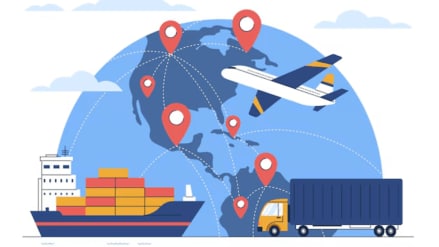By- Gulzar Didwania and Animesh Mohanty
As India approaches the anticipated Budget announcement for 2024, the political landscape adds an additional layer of importance to the expectation. As an emerging economic power with aspirations for greater global integration, enhancing competitiveness is essential for India. Streamlining trade facilitation measures is a crucial policy priority to achieve this goal, with a focus on promoting domestic manufacturing and increasing participation in the global value chain.
India is currently engaged in pursuing ambitious bilateral Free Trade Agreements (FTAs) with key partners such as the European Union and the United Kingdom, aiming to secure preferential market access for its businesses. To fully capitalize on these agreements, India must prioritize trade facilitation initiatives that align its digital cross-border trade infrastructure with the systems employed by its FTA partners. Further, while India has demonstrably achieved significant progress in streamlining cargo clearance processes, as evidenced by fulfillment of some of the commitments under World Trade Organization’s Trade Facilitation Agreement (TFA) and the positive outcomes documented in the National Time Release Study of 2023, additional efforts are required on some areas of Trade facilitation particularly on digitalization of Customs dispute resolution and litigation processes.
The Digital Revolution: Streamlining Customs Litigation in the Digital Age
The digitalization of the Customs dispute resolution and litigation process emerges as a pivotal focus, carrying the digitalization drive beyond the regular cargo clearance process. This transformative step will bring in efficiency, transparency, and modernization enabling trade and authorities to adhere to the statutorily prescribed timelines.
The common online portal under the GST regime serves as a successful model for streamlining dispute resolution. Taxpayers can now electronically submit their replies to Show Cause Notices (SCNs), attend personal hearings via secure video conferencing, and receive adjudication orders online. This eliminates the need for physical appearances and expedites the process. This transition has markedly enhanced accessibility and user-friendliness for businesses navigating GST-related litigation.
As India advances into the digital era, integrating digital platforms into the Customs dispute and litigation processes showcases the nation’s commitment to fostering a business-friendly environment and alignment with contemporary global standards. To further this initiative, it is essential to implement systems akin to the GST portal, to facilitate litigation under Customs law. Allowing for the digital submission of responses to show cause notices, letters, appeals, and other correspondences will streamline procedures and significantly contribute to the objectives of trade facilitation. This transformative step in digitalization is set to enhance India’s efficiency and global competitiveness in trade.
Digitization of other processes
In conjunction with the digitalization of tax dispute resolution and litigation processes, this Budget should also consider further streamlining import and export activities in India by building upon existing mechanisms like self-assessment. A key challenge identified by many importers and exporters is the difficulty associated with amending import/export declarations. While the Mumbai Customs Commissionerate has issued detailed guidelines for such amendments, their consistent application across all jurisdictions remains a concern. To address this longstanding industry pain point, the government should not only introduce a comprehensive roadmap for the digitalization of the import/export declaration amendment process but also establish clear timelines for its implementation. India’s proactive pursuit of trade facilitation, a digital economy, and sound regulatory practices will undoubtedly yield significant holistic benefits. Additionally, the government should also focus on proactively adopting digital measures to improve the existing facilities of electronic filing of returns related to Import of goods at concessional rate of duty (IGCR), Manufacturing and other operations in warehouse (MOOWR), and other relevant schemes.
The central government has demonstrably undertaken several trade facilitation measures, such as the Centralized Video Conference (CVC) facility introduced by the Directorate General of Foreign Trade (DGFT) and India Compliance Portal for import/exporters. These initiatives are commendable steps towards improving trade efficiency and stakeholder engagement. However, for India to solidify its position as a global leader in technology, innovation, and economic resilience, further efforts are needed to optimize the effectiveness of these digital measures. By strategically integrating these advancements with budgetary allocations, India can solidify its commitment to this transformative journey.
(Gulzar Didwania is Partner, Deloitte India and Animesh Mohanty, Manager, Deloitte India.)
(Disclaimer: Views expressed are personal and do not reflect the official position or policy of Financial Express Online. Reproducing this content without permission is prohibited.)
